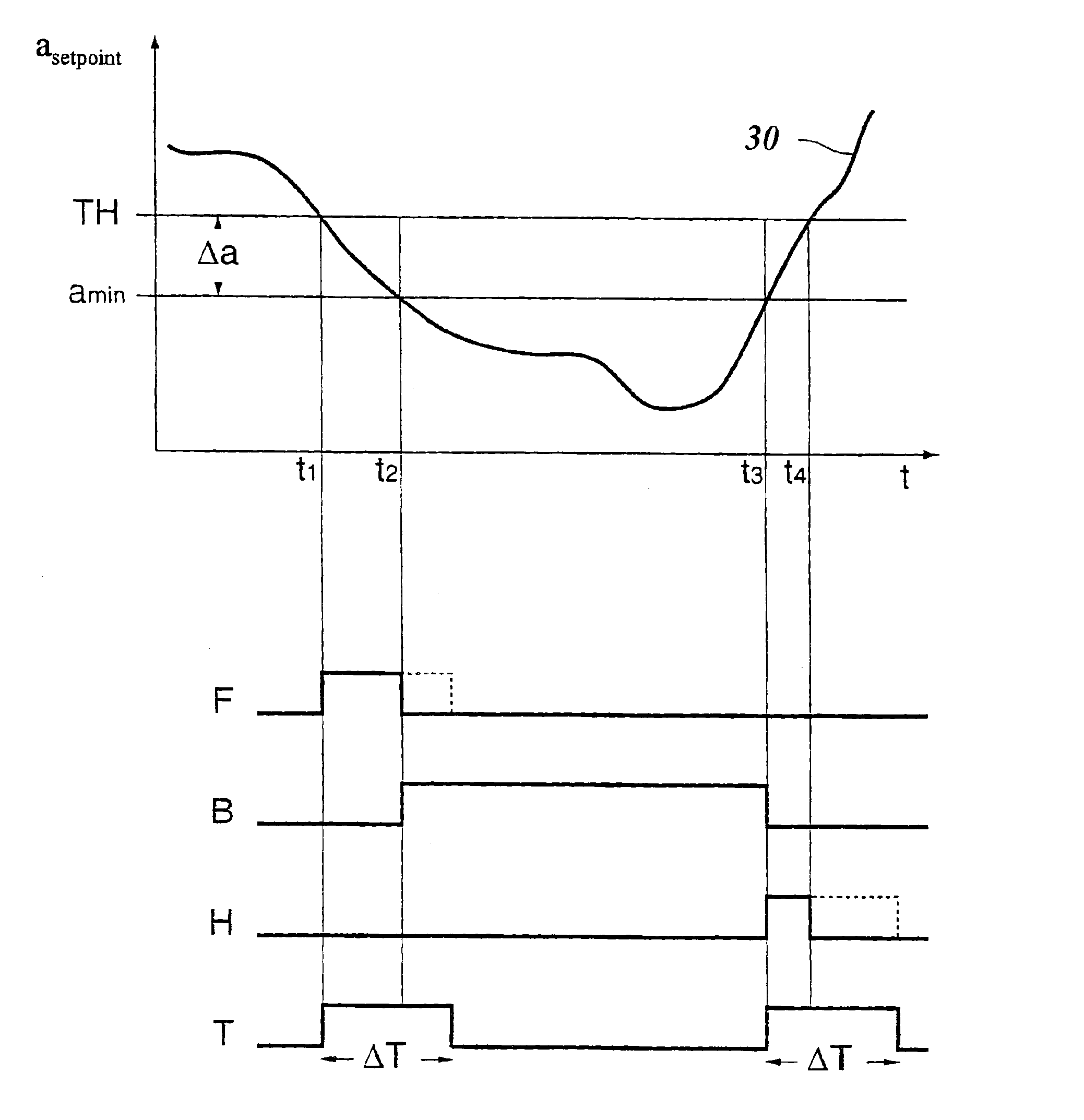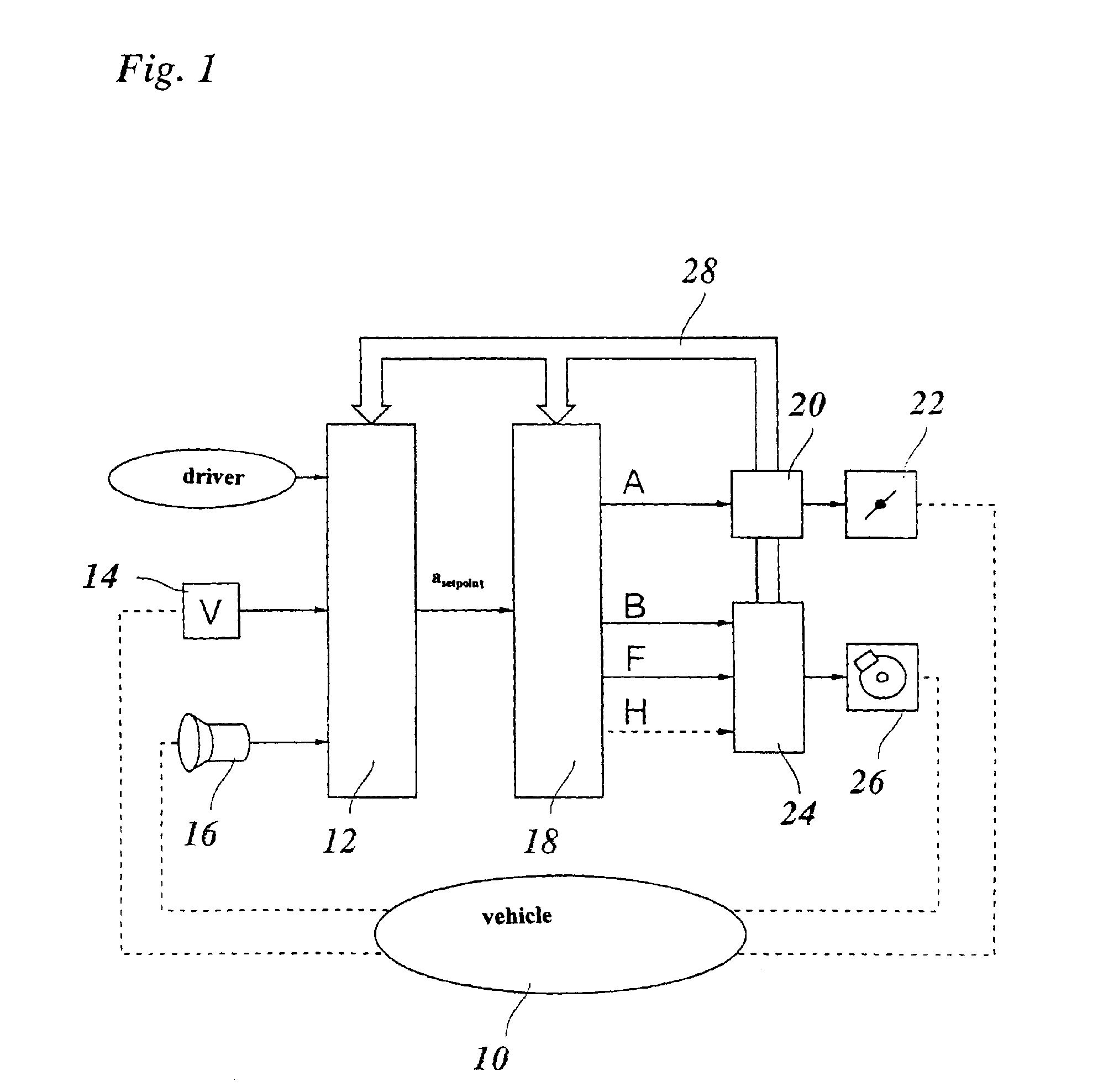Method for regulating the speed of a motor vehicle
a technology for controlling the speed of a motor vehicle and braking system, which is applied in the direction of process and machine control, braking system, instruments, etc., can solve the problem of insufficient deceleration of the vehicle, and achieve the effect of shortening the response time to the control command output to the braking system
- Summary
- Abstract
- Description
- Claims
- Application Information
AI Technical Summary
Benefits of technology
Problems solved by technology
Method used
Image
Examples
Embodiment Construction
[0021]In FIG. 1, a motor vehicle is shown symbolically whose speed is controlled with the aid of an electronic controller 12. To that end, controller 12 receives a signal from a speed sensor 14 which indicates the actual speed of the vehicle. Furthermore, a distance sensor, in the example shown a radar sensor 16, is mounted in the front on the vehicle and reports distance data and relative-speed data of objects located in front of the vehicle to controller 12. Possibly, radar sensor 16 has a certain angular-resolution capability so that the azimuth angle of the located objects may also be detected and reported to controller 12. In this manner, the radar system and / or controller 12 are able to differentiate preceding vehicles in the vehicle's own lane from vehicles in other lanes, as well as from fixed targets at the edge of the roadway. When preceding vehicles are located in the vehicle's own lane, then the immediately preceding vehicle is selected as a target object, and the speed ...
PUM
 Login to View More
Login to View More Abstract
Description
Claims
Application Information
 Login to View More
Login to View More - R&D
- Intellectual Property
- Life Sciences
- Materials
- Tech Scout
- Unparalleled Data Quality
- Higher Quality Content
- 60% Fewer Hallucinations
Browse by: Latest US Patents, China's latest patents, Technical Efficacy Thesaurus, Application Domain, Technology Topic, Popular Technical Reports.
© 2025 PatSnap. All rights reserved.Legal|Privacy policy|Modern Slavery Act Transparency Statement|Sitemap|About US| Contact US: help@patsnap.com



